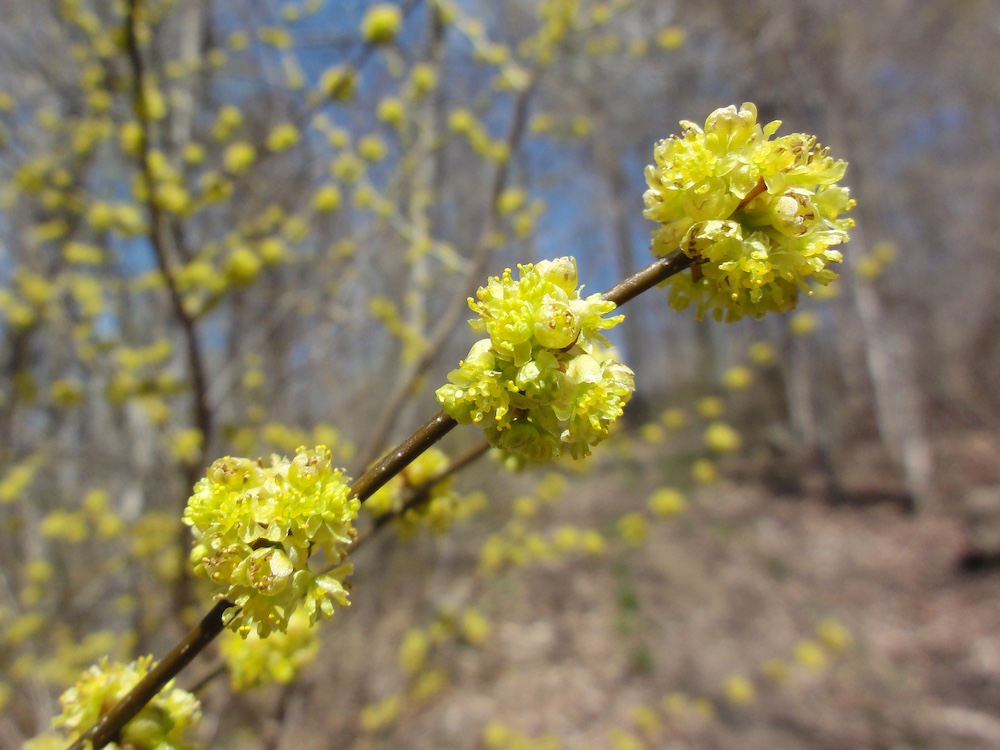
The northern spicebush (Lindera benzoin) is loaded with special features and there’s even a butterfly named after it. Spicebush has fragrant yellow flowers (photo at top) in early spring before the shrub leafs out.
Although shade tolerant, the best form, flowering, fruiting and fall color develop when spicebush is planted in full- to part-sun. Morning sun would probably be ideal.
The native, deciduous shrub grows in the understory of woodlands, where it blooms before trees fully leaf out. It has a naturally rounded, broad form and will get 6 to 12 feet tall and wide.
Its assets include more than the spicy fragrant flowers, which are pollinated by flies, wasps and other insects. The spicy fragrance permeates the leaves and bark, too. The leaves can be used to make tea.

The shrub is the nursery for spicebush caterpillars (Papilio troilus), which become the spicebush swallowtail butterfly. Those caterpillars have fascinating looks.
After the flowers fade, fruit forms on female spicebush. The plant is dioecious and to get fruit you need a male and female plant. Figuring out if a plant is male or female can be a challenge. In general, male flowers are larger than female flower.
Read more
EXTRA!
Birds love the red spicebush berries. Foragers like them, too. My friend Ellen Zachos, author of The Backyard Forager, uses the berries to make spicebush snicker doodles.